 Why do I need a Geisinger brew group thermometer?
Why do I need a Geisinger brew group thermometer?
- To always keep an eye on the exact brewing temperature and brewing time.
- With minimal installation effort, you can add a temperature gauge and shot timer to your machine.
 What is the difference (offset) between the displayed temperature and the actual brewing temperature directly on the coffee puck?
What is the difference (offset) between the displayed temperature and the actual brewing temperature directly on the coffee puck?
- The difference is approx. 2.5 - 2.8°C (measured with a Scace 2 after 1 hour heating time)
 What brewing temperature should my machine have?
What brewing temperature should my machine have?
- Depending on the type of bean between 90.5°C - 96°C, the taste range between 90.5°C and 96°C is extreme. 93°C is a very good average value and should be aimed at for a balanced espresso preparation.
 Do I need a brew group thermometer if I have a PID controller?
Do I need a brew group thermometer if I have a PID controller?
- The answer is very clear, YES. Since most PID controllers measure at the boiler, the brewing water has a long way to go to the coffee puck. The heating-up time and the ambient temperature of the machine are also decisive for the displayed temperature of the PID control. Therefore, the brewing water should be measured as close as possible to the coffee puck.
 My thermometer shows a temperature that is too high or too low, what can be the reason?
My thermometer shows a temperature that is too high or too low, what can be the reason?
- With a two-circuit espresso machine, the boiler pressure should be around 1.2 bar. If the brewing temperature is still too low, you should test a heating-up time of approx. 45 minutes at room temperature.
- Put the thermometer in ice water. The thermometer should now read 0°C.
 The beeping of my thermometer is quiet.
The beeping of my thermometer is quiet.
- Unfortunately, this is due to the design, since the housing is waterproof from the front, the sound penetrates badly to the outside.
 Is it easy to assemble the brew group thermometer?
Is it easy to assemble the brew group thermometer?
- Yes, very easy. Just remove the revision screw and screw in the brew group thermometer - done.
 Which machines do the Geisinger brew group thermometers fit?
Which machines do the Geisinger brew group thermometers fit?
- To all manual E61 brewing groups with revision screw.

